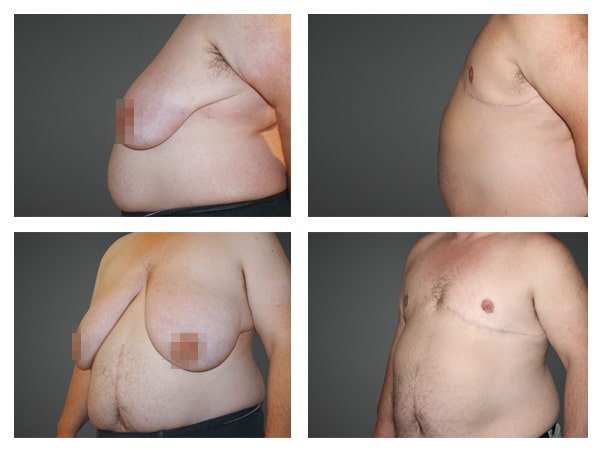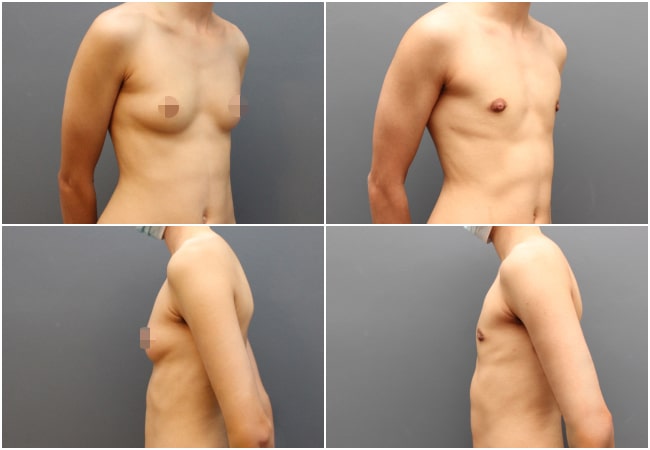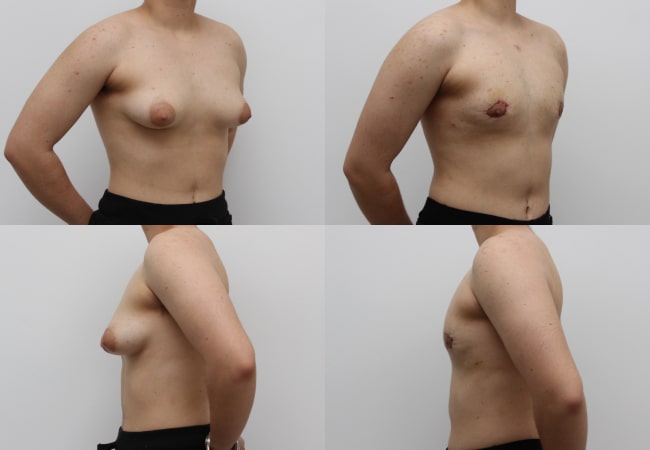FTM Top Surgery
- Home
- -
- Plastic Surgery
- -
- Reconstructive Surgery
- -
- FTM TOP SURGERY

FTM TOP SURGERY BRIEFLY
procedure time
2 - 3 hours
Anesthesia
General
hospital stay
1 night
time off work
10 - 14 days
Female to Male Top surgery
Gender affirming masculinization surgery includes breast, outer genital and face surgical procedures. Transgender mastectomy (Top surgery) is the most common surgical intervention in individuals with gender dysphoria and the first step in the gender affirming process.
There are different surgical options available today. The technique that we choose to use depends mainly on breast size and degree of breast ptosis. Transgender mastectomy aims to:
- remove all breast tissue and redundant skin
- reshape the trunk and place the nipple-areola complex in a way that reflects the male anatomy
Female to male breast surgery is usually performed in adult individuals, either before or after hormonal therapy. A psychiatric evaluation is necessary in order to proceed with surgery.
The surgical procedure
The operation is performed under general anesthesia and takes approximately 2-3 hours, depending on breast size and the technique that we use. The patient remains at the hospital for one night for observation and returns home the next day. Antibiotics are prescribed and specific instructions are provided for the next few days. All excised breast tissue is sent for histological examination.
Recovery
The patient returns home with an elastic bandage around the chest and two small drains coming out of the operated area in order to avoid blood and other fluid collection. These drains are removed after 2-3 days and the elastic bandage is then replaced by an elastic garment that should be used for 4-6 weeks for better healing. Usually the patient can return to everyday activities after 5-7 days. Exercise and heavy lifting is allowed one month after surgery.
Which are the possible complications after transgender mastectomy?
Possible complications after top surgery include hematoma and nipple loss (necrosis). These are rather uncommon and can be avoided when the right technique is used and when the patient conforms accordingly.
Poor healing can lead to dysmorphic scars after this type of surgery. In order to achieve the best possible healing conditions the doctor will give you wound care instructions with silicone sheets and healing creams.
Small asymmetries in breast appearance may occur after the healing process is concluded, usually 12-18 months post surgery. These can either be camouflaged by natural hair growth and tattooing or corrected with a small surgical procedure under local anesthesia.
Top surgery cost
The cost of transgender breast surgery varies. Individual anatomical factors such as breast size, skin elasticity etc determine the type of operation and final price. All these details are discussed in-depth during a consultation with the plastic surgeon which aims to address any questions or possible concerns.
Can I see more before-and-after pictures of your previous patients?
All photographs on our webpage and social media are published with our patients’ consent. However, during your consultation, either in person or online, you will be able to see a great number of pictures of patients who underwent top surgery with us, showcasing all available surgical techniques. This will provide you with a better understanding of the anticipated results.
Before & after photos
FTM TOP SURGERY BRIEFLY
Duration of surgery
2 - 3 hours
Anesthesia
General
Stay at the clinic
1 night
Return to work
10 - 14 days



